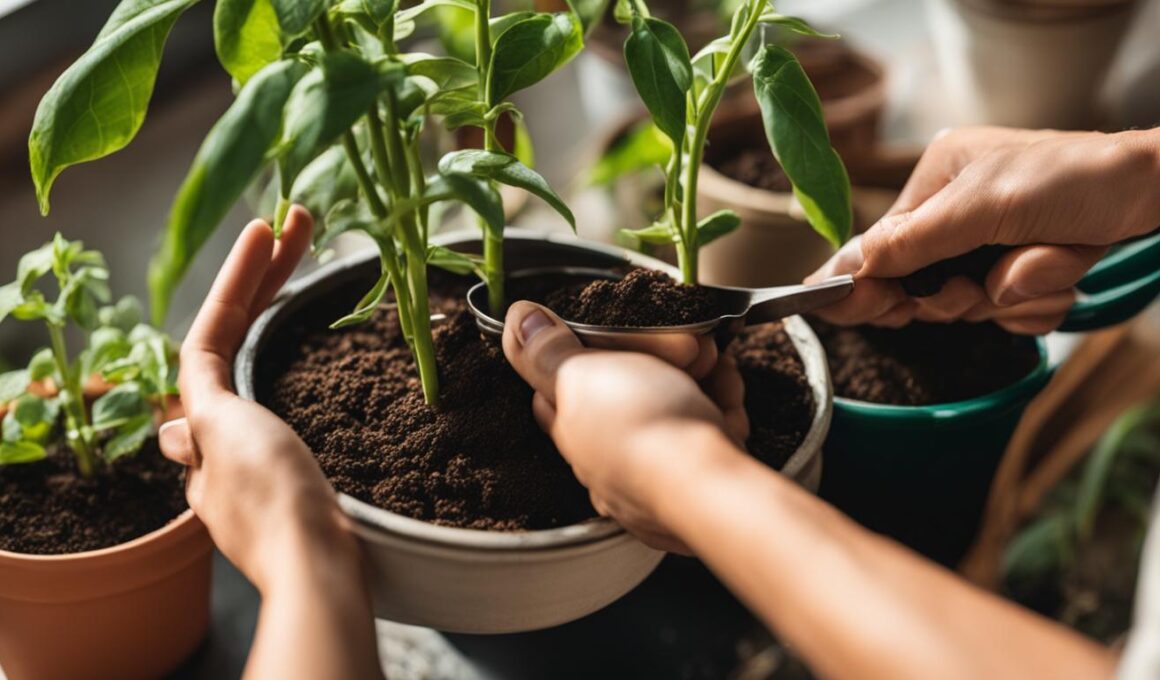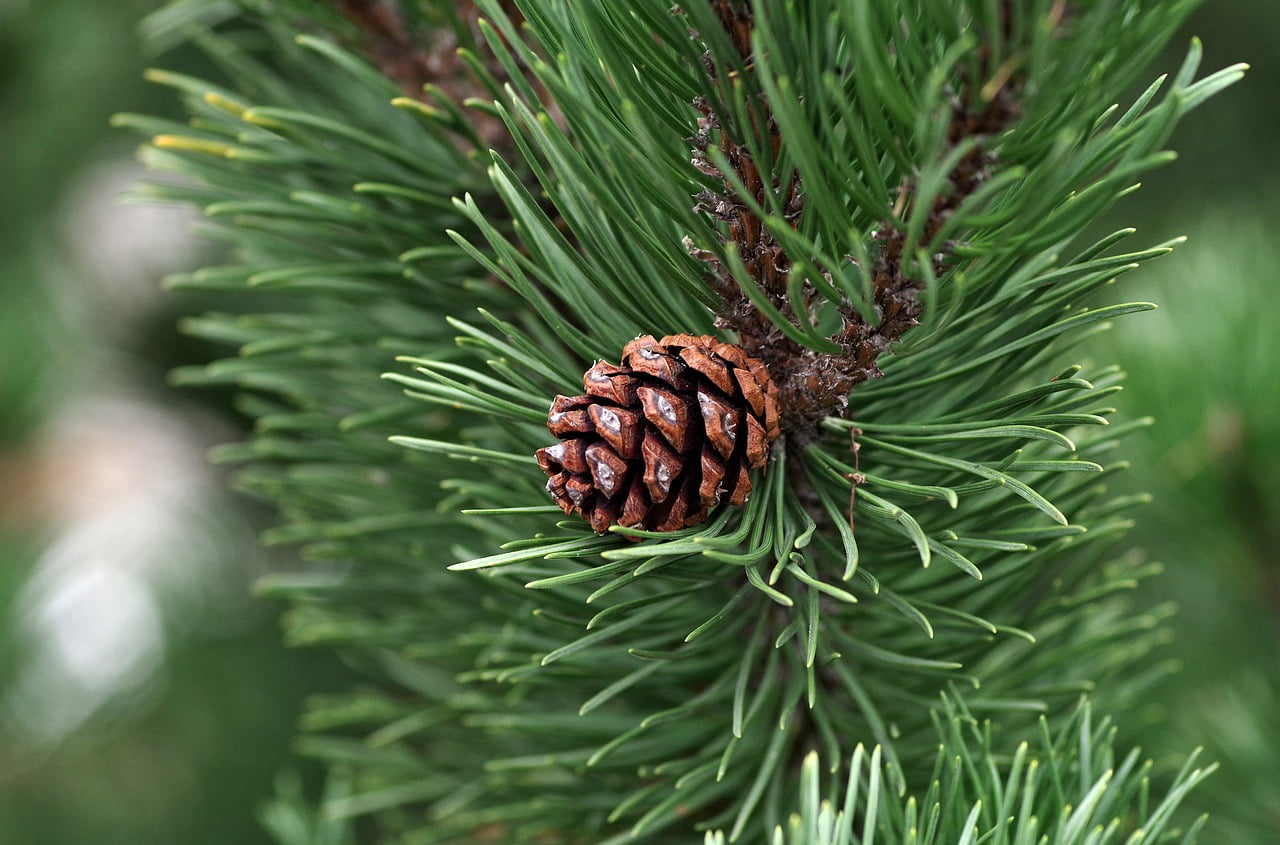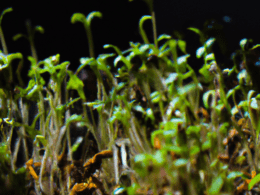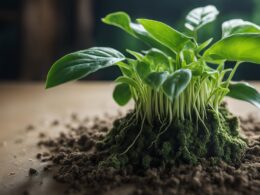Are you interested in growing your own green beans but don’t have a large outdoor garden? Starting green beans indoors is a fantastic solution that allows you to enjoy a bountiful harvest right in the comfort of your home. In this comprehensive guide, we will walk you through all the steps and techniques you need to know to successfully grow green beans indoors.
Post Summary
- Starting green beans indoors can give you a head start and extend your growing season.
- Indoor bean gardening allows for more control over growing conditions and protection from pests.
- Choose the right bean variety based on the available space and your preferences.
- Use suitable containers with proper drainage and compost-enriched soil for optimal growth.
- Provide ideal growing conditions, including sufficient sunlight and temperature around 70°F (21°C).
Benefits of Starting Green Beans Indoors
Starting green beans indoors offers several benefits that can help you achieve a successful indoor bean garden. Here are some advantages of indoor bean gardening:
- Extended Growing Season: By starting green beans indoors, you can get a head start on your growing season. This allows you to enjoy an extended harvest of fresh green beans.
- Pest and Weather Protection: Indoor bean gardening helps protect your plants from pests and harsh weather conditions. By keeping your beans indoors, you can avoid damage caused by insects, birds, and extreme temperatures.
- Controlled Growing Environment: Starting beans indoors gives you greater control over the growing environment. You can ensure optimal conditions for germination and growth, including temperature, light, and moisture levels.
- Maximized Space: Indoor bean gardening is ideal for those with limited outdoor space. With the right containers and support structures, you can grow beans vertically, making efficient use of your indoor gardening area.
Indoor bean gardening provides a convenient and rewarding way to grow your own green beans. By taking advantage of the benefits it offers, you can enjoy a bountiful harvest of fresh, homegrown produce.
Comparing Indoor and Outdoor Bean Gardening
To further highlight the advantages of starting green beans indoors, let’s compare it to traditional outdoor bean gardening:
| Indoor Bean Gardening | Outdoor Bean Gardening | |
|---|---|---|
| Growing Season | Extended growing season by starting indoors | Dependent on local climate |
| Pest Protection | Less susceptible to pests indoors | Vulnerable to pests, requiring protective measures |
| Weather Protection | Protected from extreme temperatures and weather conditions | Exposed to weather fluctuations |
| Growing Space | Maximized space utilization through vertical gardening | Requires horizontal ground space |
As you can see, starting green beans indoors provides several advantages over outdoor gardening. It offers greater control, protection, and space optimization, making it an excellent choice for those interested in indoor bean gardening.
Choosing the Right Bean Variety for Indoor Gardening
When it comes to indoor bean gardening, selecting the right variety is crucial for optimal growth and a successful harvest. Different bean varieties have different growth habits and requirements, so it’s essential to choose ones that are well-suited to an indoor environment. Here are some popular bean varieties that are recommended for indoor gardening:
Bush Beans
Bush beans are compact and do not require additional support, making them ideal for small indoor spaces. These beans stay low to the ground and produce a bountiful harvest of delicious pods. Some popular bush bean varieties for indoor gardening include ‘Hestia’ and ‘Blue Lake’.
Pole Beans and Runner Beans
If you have vertical space available, pole beans and runner beans are excellent choices for indoor gardening. These vining beans can add a dynamic element to your indoor garden and provide a higher yield per plant. Some recommended varieties of pole and runner beans for indoor gardening include ‘Kentucky Wonder’ and ‘Scarlet Runner’.
When choosing your bean variety, consider the space you have available and your personal preferences. Bush beans are great for compact spaces, while pole beans and runner beans can add vertical interest to your indoor garden. Experiment with different varieties to find the ones that thrive in your indoor environment and suit your taste preferences.
Recommended Bean Varieties for Indoor Gardening
| Bean Variety | Characteristics | Recommended For |
|---|---|---|
| Bush Beans | Compact, don’t require support | Small indoor spaces |
| Pole Beans | Vining, require vertical support | Vertical gardening |
| Runner Beans | Vining, require vertical support | Vertical gardening |
Remember to provide the necessary support, such as trellises or stakes, for pole beans and runner beans to ensure they grow upward properly. With the right variety, you’ll be able to enjoy a thriving indoor bean garden and a delicious harvest.
Choosing the Right Containers for Indoor Bean Gardening
When it comes to indoor bean gardening, selecting the appropriate containers is crucial for the success of your plants. The right containers will provide the necessary drainage and ample space for the roots to grow and thrive. Rectangular containers are recommended as they offer better drainage compared to round pots. Make sure the containers have drainage holes to prevent waterlogging and the development of root rot.
Additionally, adding a thin layer of gravel at the bottom of the containers can help improve drainage even further. This layer acts as a barrier between the soil and the excess water, allowing the roots to access the moisture they need without becoming waterlogged.
When choosing the size of the containers, consider the specific bean variety you are growing and the space it requires. Bush beans generally require small to medium-sized containers, while pole beans and runner beans need larger containers or trellises for vertical support. Ensure that the containers are deep enough to accommodate the root system and allow for optimal growth.
Selecting the Right Containers for Indoor Bean Gardening
To summarize, here are the key considerations when selecting containers for indoor bean gardening:
- Opt for rectangular containers with drainage holes to prevent root rot.
- Add a layer of gravel at the bottom of the containers for improved drainage.
- Choose the appropriate container size based on the specific bean variety and its space requirements.
By selecting the right containers for your indoor bean garden, you can create an ideal growing environment that promotes healthy root development and ensures the overall success of your plants.
Providing the Ideal Growing Conditions for Indoor Beans
When it comes to growing green beans indoors, providing the ideal growing conditions is crucial for their successful growth and development. By ensuring optimal temperature and light, you can create an environment that promotes healthy bean plants and maximizes your harvest.
Optimal Temperature
Green beans thrive in moderate temperatures, with the ideal range being around 70°F (21°C) during the day and slightly cooler at night. It’s important to maintain a consistent temperature to prevent stress on the plants. Fluctuations in temperature can lead to stunted growth and poor bean production. Consider using a thermometer to monitor the temperature in your indoor growing space and make adjustments as needed.
Optimal Light
Indoor green beans require bright sunlight to fuel their growth. Place your containers in a location that receives at least 6 hours of direct sunlight each day. If natural light is limited, you can supplement it with artificial grow lights. Choose full-spectrum lights that mimic natural sunlight to provide the necessary light spectrum for photosynthesis. Position the lights at an appropriate distance from the plants to avoid burning or heat stress.
Remember to rotate your bean plants regularly to ensure even exposure to light and prevent them from leaning towards a single light source. This will promote balanced growth and robust bean production.
In conclusion, by providing the proper care, including watering, fertilizing, and monitoring for pests and diseases, you can ensure the health and productivity of your indoor bean plants. With dedication and attention to detail, you’ll be rewarded with a bountiful harvest of fresh green beans to enjoy.
Harvesting and Storing Indoor Green Beans
Once your indoor green beans have reached the appropriate size and the pods are slightly soft to the touch, it’s time to harvest them. Harvesting green beans regularly will encourage continued production and a longer harvest season. To harvest the beans, use small gardening scissors to trim off the pods or simply pinch them off the stem.
After harvesting, it’s important to handle the beans with care to preserve their freshness. Use the beans immediately for the best flavor and texture. If you have more beans than you can consume right away, you can store them for later use.
To store green beans after harvest, refrigeration is the best method. Place the beans in a plastic bag or airtight container and store them in the refrigerator. Green beans can be stored this way for up to a week. Keep in mind that the longer they are stored, the more their quality will deteriorate.
If you want to enjoy your green beans beyond a week, you can consider freezing or canning them for longer storage. To freeze green beans, blanch them in boiling water for a few minutes, then transfer them to an ice bath to cool. Drain the beans and pack them into freezer-safe containers or bags. Label and date the containers before placing them in the freezer. Frozen green beans can be stored for several months.
| Method | Storage Duration |
|---|---|
| Refrigeration | Up to a week |
| Freezing | Several months |
| Canning | Up to 1 year |
Common Challenges and Tips for Indoor Bean Gardening
Indoor bean gardening can come with its fair share of challenges. One of the main challenges is providing adequate support for pole and runner beans as they grow upward. These types of beans require a trellis or other support structures to help them climb and prevent them from sprawling across the floor. Install a sturdy trellis or use a bamboo support system to train the plants to grow vertically.
Another challenge that indoor bean gardeners may face is managing pests and diseases. Common pests that can attack bean plants include aphids, spider mites, and various types of beetles. Regularly inspect your plants for signs of infestation, such as yellowing leaves or holes in the foliage. If you spot any pests, you can try using organic insecticidal sprays or introducing beneficial insects like ladybugs to help control the population. It’s also important to practice good sanitation in your indoor garden by removing any fallen leaves or debris that could harbor pests or diseases.
To ensure successful indoor bean growing, it’s crucial to provide your plants with the optimal growing conditions. This includes maintaining the right temperature and humidity levels, providing sufficient light, and ensuring proper air circulation. Indoor beans thrive in bright sunlight, so placing your containers in a location that receives at least 6 hours of direct sunlight each day is ideal. If natural light is limited, you can supplement with grow lights. Additionally, monitor the temperature and humidity in your indoor garden to ensure it stays within the optimal range for bean growth.
Proper watering and fertilization are also essential for successful indoor bean gardening. Beans need consistent moisture, but overwatering can lead to root rot and other issues. Water your plants when the top inch of soil feels dry, and make sure the containers have proper drainage to prevent waterlogged roots. Fertilize your beans regularly with a balanced, water-soluble fertilizer to provide them with essential nutrients. Following these tips and staying vigilant in caring for your indoor bean plants will help you overcome any challenges and enjoy a thriving indoor garden.
Recommended Bean Varieties for Indoor Gardening
When it comes to indoor gardening, selecting the right bean varieties is crucial for a successful harvest. Here are some recommended bean varieties that are well-suited for indoor gardening:
Bush Beans
| Variety | Description |
|---|---|
| ‘Hestia’ | A compact bush bean variety that produces tender and flavorful green beans. It is known for its disease resistance and is perfect for small indoor spaces. |
| ‘Blue Lake’ | A classic bush bean variety that produces long, straight pods with excellent flavor. It is a reliable performer and a favorite among many gardeners. |
Pole Beans and Runner Beans
| Variety | Description |
|---|---|
| ‘Kentucky Wonder’ | A popular pole bean variety that produces abundant and flavorful pods. It has excellent disease resistance and can reach impressive heights. |
| ‘Scarlet Runner’ | A vigorous runner bean variety with beautiful red flowers. It is a versatile bean that can be enjoyed both as a snap bean and a shelling bean. |
These recommended bean varieties offer a range of flavors, growth habits, and colors, allowing you to choose the ones that suit your taste and indoor gardening goals. Whether you prefer compact bush beans or want to add vertical interest with pole or runner beans, these varieties are sure to thrive in your indoor garden.
Experiment with different varieties and techniques to find what works best for you. With proper care and attention, you can enjoy a bountiful harvest of fresh green beans right from your indoor garden.
Tips for Successful Indoor Bean Gardening
Indoor bean gardening can be a rewarding and enjoyable experience. To ensure your beans thrive and produce a bountiful harvest, follow these tips and best practices:
- Choose the right variety: Select bean varieties that are suitable for indoor gardening, such as bush beans or pole beans that can be trained to grow vertically.
- Use suitable containers: Opt for containers with proper drainage to prevent root rot. Rectangular containers with drainage holes work well for bean plants.
- Provide optimal growing conditions: Place your bean containers in a location that receives at least 6 hours of direct sunlight each day. Maintain a temperature of around 70°F (21°C) for optimal growth.
- Start seeds indoors: Begin germinating your bean seeds indoors about 2 to 3 weeks before the last expected frost date. Sow them in peat pots about 1 inch deep.
- Care for your plants: Regularly water your bean plants, ensuring that the soil remains moist but not soggy. Fertilize with compost tea or a light fertilizer, and keep an eye out for pests and diseases.
- Harvest at the right time: Harvest your green beans when they are between 3 to 8 inches long and the pods are slightly soft to the touch. Regularly picking the beans promotes continuous production.
By following these tips and best practices, you can create an ideal environment for your indoor bean garden and enjoy a successful harvest of fresh, homegrown green beans.
Conclusion
Indoor bean gardening offers a convenient and rewarding way to grow fresh and delicious green beans right in your own home. By following the steps and best practices outlined in this guide, you can successfully start green beans indoors and enjoy a bountiful harvest. Whether you have limited outdoor space or simply want to extend your growing season, indoor bean gardening is a great option.
From choosing the right bean variety and containers to providing the ideal growing conditions and caring for your plants, every step is crucial to maximize your indoor bean garden’s success. Remember to select bush beans for small spaces, while pole and runner beans are perfect for vertical gardening. Ensure your containers have proper drainage and provide your beans with enough sunlight, temperature, and water.
Don’t forget to regularly care for your indoor bean plants by watering, feeding, and protecting them from pests and diseases. Harvest your beans at the right time and store them properly to enjoy their freshness for longer. With a little planning and effort, you can have a thriving indoor bean garden and experience the satisfaction of growing your own food.
So, get started on your indoor bean garden today. Experiment with different bean varieties and techniques to find what works best for you. Whether you’re a beginner or an experienced gardener, indoor bean gardening is a fulfilling and enjoyable way to bring the joy of growing your own food into your home.
Can the same methods be used for starting cucumbers indoors as for green beans?
Yes, similar techniques can be used for starting cucumbers indoors as for green beans. For both, it’s important to provide adequate light, warmth, and moisture. When starting indoor cucumber gardening tips, it’s crucial to use the right containers and provide proper support for the plants as they grow.
FAQ
What are the benefits of starting green beans indoors?
Starting green beans indoors allows you to extend your growing season, protect plants from pests and harsh weather conditions, and have more control over the growing environment.
How do I choose the right bean variety for indoor gardening?
Consider your available space and personal preferences. Bush beans are great for small spaces, while pole beans and runner beans are perfect for vertical gardening.
What containers should I use for indoor bean gardening?
Choose rectangular containers with proper drainage and enough space for root growth. Add a layer of gravel at the bottom for improved drainage.
What are the ideal growing conditions for indoor beans?
Place your containers in a location that receives at least 6 hours of direct sunlight per day. Maintain a temperature of around 70°F (21°C) and keep the soil moist but not soggy.
How do I start bean seeds indoors?
Sow the seeds about 1 inch deep in peat pots, 2 to 3 weeks before the last expected frost date. Maintain a temperature of around 65°F (18°C) for germination.
How do I care for indoor bean plants?
Regularly water the plants, ensuring the soil remains moist but not waterlogged. Fertilize with compost tea and light fertilizer. Watch out for pests and diseases.
When should I harvest and store indoor green beans?
Harvest the beans when they are 3 to 8 inches long and slightly soft to the touch. Use them immediately or store in the refrigerator for up to a week. You can also freeze or can them for longer storage.
What are the common challenges of indoor bean gardening?
Providing adequate support for pole and runner beans as they grow upward and managing pests and diseases are common challenges.
What bean varieties are recommended for indoor gardening?
Consider ‘Hestia’ and ‘Blue Lake’ for bush beans, and ‘Kentucky Wonder’ and ‘Scarlet Runner’ for pole beans and runner beans.
What tips can you give for successful indoor bean gardening?
Choose the right variety, use suitable containers, provide optimal growing conditions, start seeds indoors, care for your plants, and harvest at the right time.










